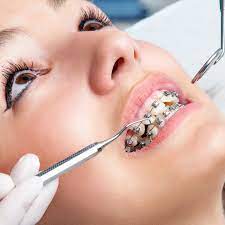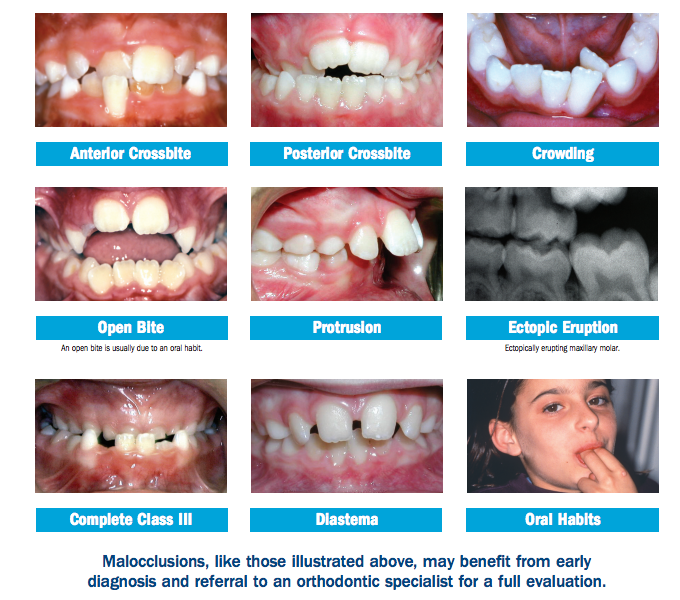Our Causey Orthodontics PDFs
Table of ContentsCausey Orthodontics for DummiesHow Causey Orthodontics can Save You Time, Stress, and Money.The smart Trick of Causey Orthodontics That Nobody is Talking AboutLittle Known Facts About Causey Orthodontics.Causey Orthodontics Things To Know Before You Buy
Disregarding occlusal relationships, it was regular to eliminate teeth for a variety of oral issues, such as malalignment or congestion. The idea of an undamaged dentition was not widely valued in those days, making bite correlations appear unimportant. In the late 1800s, the concept of occlusion was necessary for producing dependable prosthetic substitute teeth.As these concepts of prosthetic occlusion advanced, it became an important device for dentistry. It was in 1890 that the job and impact of Dr. Edwards H. Angle started to be really felt, with his contribution to contemporary orthodontics specifically notable. Originally focused on prosthodontics, he educated in Pennsylvania and Minnesota before routing his focus towards oral occlusion and the treatments required to keep it as a typical condition, therefore becoming called the "dad of modern-day orthodontics".

The principle of ideal occlusion, as proposed by Angle and integrated into a classification system, enabled a change in the direction of treating malocclusion, which is any type of inconsistency from typical occlusion. Having a full set of teeth on both arcs was very demanded in orthodontic treatment due to the requirement for exact relationships between them.
How Causey Orthodontics can Save You Time, Stress, and Money.
As occlusion came to be the crucial priority, face proportions and visual appeals were neglected - orthodontist services. To accomplish ideal occlusals without making use of external pressures, Angle postulated that having best occlusion was the most effective method to get optimum facial appearances. With the passing of time, it ended up being fairly noticeable that also a phenomenal occlusion was not suitable when thought about from a visual factor of view
Charles Tweed in America and Raymond Begg in Australia (that both researched under Angle) re-introduced dental care removal into orthodontics during the 1940s and 1950s so they could enhance face esthetics while additionally making certain far better stability concerning occlusal connections. In the postwar period, cephalometric radiography started to be utilized by orthodontists for determining modifications in tooth and jaw setting created by growth and therapy. It came to be obvious that orthodontic treatment might change mandibular development, leading to the development of useful jaw orthopedics in Europe and extraoral force steps in the US. Nowadays, both practical home appliances and extraoral gadgets are applied around the world with the goal of changing growth patterns and forms. Subsequently, going after true, or at the very least boosted, jaw connections had come to be the major goal of treatment by the mid-20th century.
The Main Principles Of Causey Orthodontics
 The American Journal of Orthodontics was created for this function in 1915; prior to it, there were no scientific goals to adhere to, nor any type of precise classification system and braces that lacked attributes. Up until the mid-1970s, braces were made by covering metal around each tooth. With developments in adhesives, it came to be possible to rather bond steel braces to the teeth.
The American Journal of Orthodontics was created for this function in 1915; prior to it, there were no scientific goals to adhere to, nor any type of precise classification system and braces that lacked attributes. Up until the mid-1970s, braces were made by covering metal around each tooth. With developments in adhesives, it came to be possible to rather bond steel braces to the teeth.This has actually had meaningful effects on orthodontic treatments that are carried out on a regular basis, and these are: 1. Appropriate interarchal connections 2. Right crown angulation (tip) 3.
The advantage of the layout depends on its bracket and archwire combination, which calls for only minimal cable flexing from the orthodontist or medical professional (affordable orthodontist near me). It's appropriately named after this attribute: the angle of the port and density of the bracket base ultimately identify where each tooth is positioned with little demand for additional adjustment
How Causey Orthodontics can Save You Time, Stress, and Money.
Both of these systems employed the same brackets for each and every tooth and required the flexing of an archwire in 3 aircrafts for situating teeth in their preferred placements, with these bends dictating ultimate placements. When it involves orthodontic devices, they are divided into two types: removable and repaired. Detachable devices can be tackled and off by the client as called for.

Therefore, nearly all modern set appliances can be thought about variants on this edgewise device system. Early 20th-century orthodontist Edward Angle made a major contribution to the world of dental care. He created four distinct appliance systems that have been utilized as the basis for many orthodontic treatments today, barring a couple of exemptions.
What Does Causey Orthodontics Do?

The cable ended in a thread, and to relocate forward, a flexible nut was utilized, which enabled for an increase in circumference. By ligation, each private tooth was connected to this extensive archwire (orthodontist services). Because of its limited series of movement, Angle was unable to accomplish specific tooth positioning with an E-arch
These tubes held a firm pin, which can be repositioned at each consultation in order to move them in position. Called the "bone-growing appliance", this gizmo was theorized to urge healthier bone growth because of its potential for moving pressure straight to the origins. Executing it proved frustrating in reality.
Comments on “How Causey Orthodontics can Save You Time, Stress, and Money.”